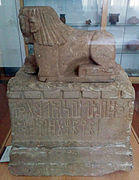感動 (91 ):賀龍年(文化、美術) "天龍"與本土本地創新。龍 vs sphinx: 翻譯之難,以情感教育Sentimental Education中一短句/語The flaps of her cap fell like the fillets of a sphinx. 為例。黃仁勳(Jensen Huang 輝達CEO) 。. 黎智英2日出庭續審 3項指控喊無罪。訃 OBI. 挽中國財新傳媒。張誌家
The flaps of her cap fell like the fillets of a sphinx. turpentine
的機械翻譯.....Project Gutenberg's Sentimental Education Vol 1, by Gustave Flauberthttps://www.gutenberg.org/files/34828/34828-h/34828-h.htm
turpentine
Turpentine is a fluid obtained by the distillation of resin harvested from living trees, mainly pines. Principally used as a specialized solvent, it is also a source of material for organic syntheses. Wikipedia
The flaps of her cap fell like the of a sphinx
Google 莫名其妙:她帽子的襟翼像獅身人面像的魚片一樣掉落
fillets
A fillet was originally worn in classical antiquity, especially in cultures of the Mediterranean, Levant and Persia, including Hellenic culture. At that time, a fillet was a very narrow band of cloth, leather or some form of garland, frequently worn by athletes. It was also worn as a sign of royalty and became symbolized in later ages as a metallic ring which was a stylized band of cloth. Greeks called it Diadema (διάδημα) and although most Roman Emperors didn't wear it, after Caesar refused it when offered him by Antonius, except in a few cases, Constantine the Great adopted the Greek emblem of royalty. Before the diadem was worn by the Roman emperors as a symbol of sovereignty, it was used as a head-dress by Roman women.[1]
Later, in medieval times, a fillet was a type of headband worn by unmarried women, in certain monk hoods, usually with a wimple or barbette.[2] This is indicated in the sign language of said monks (who took oaths of silence), wherein a sweeping motion across the brow, in the shape of a fillet, indicated an unmarried woman.[2]


















![Classic Régence garden Sphinx in lead, Château Empain, the Parc d'Enghien [nl], Belgium](https://upload.wikimedia.org/wikipedia/commons/thumb/c/c0/Enghien_CHSph1JPG.jpg/190px-Enghien_CHSph1JPG.jpg)






沒有留言:
張貼留言